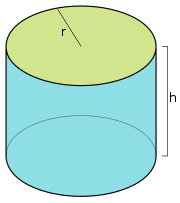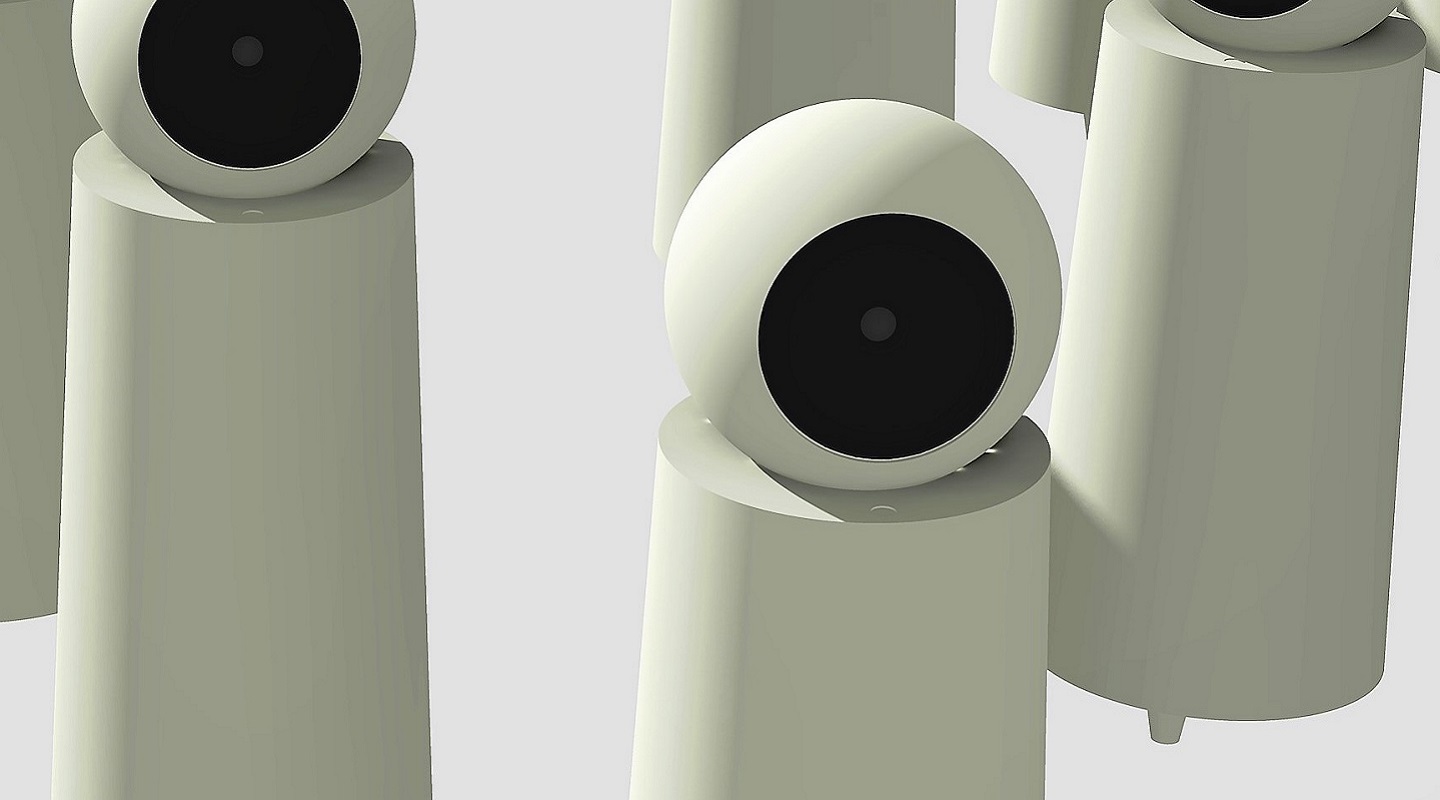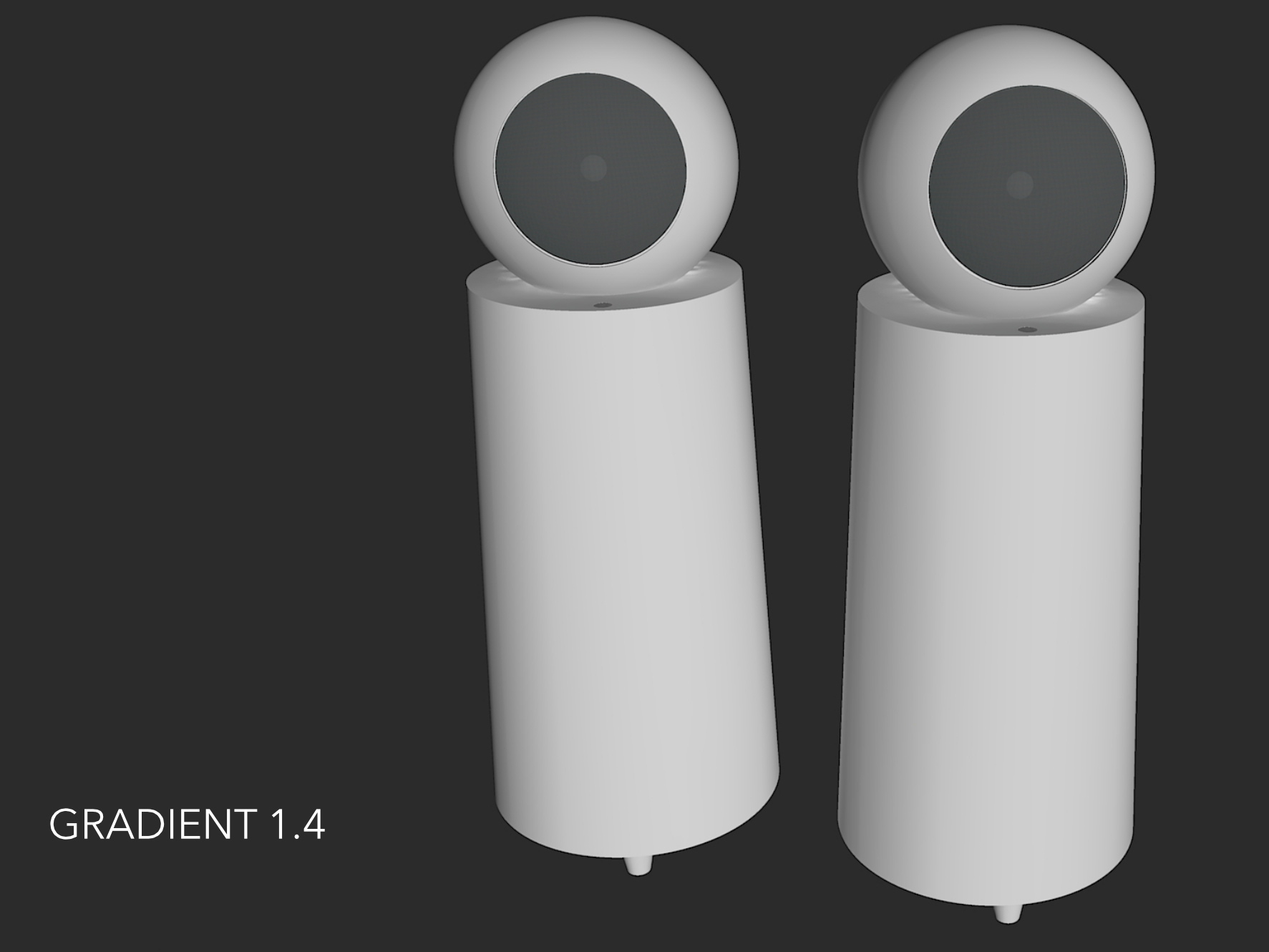How do you think this SEAS Coax driver and design would sound if mounted in a sphere?
Collapse
X
-
Tags: None
- Bottom
-
^Octagonal cylinder is not sphere. Compare rectangular to sphere.
Some hints

- Bottom
Comment
-
Ball speakers have some cult, the latest appearance that I have noticed is the top of Gradient 1.4, diameter approximately 220mm, driver is coaxial nominally 176/25mm.
Another remarkable (almost) spherical hifi speaker is Devialet Phantom, with two dome woofers and a coaxial double-dome. Very close to ideal form!

A sphere/ball radiates differently form a spherical plate that appears in my post, Edge simulation. BS change is slower because the shape distributes "step/loss'" but still the same 6dB. Rectangular boxes benefit from the same phenomenom. Driver diameter plays a significant role too, in Olson's paper the radiator is a point source and "plots" are hand-drawn.
Here is more theory and an example of a ball speaker https://www.linkedin.com/pulse/who-h...s-steve-mowry/
And even more theoretical hereMy DIY speaker history: -74 Philips 3-way, -82 Hifi 85B, -07 Zaph L18, -08 Hifitalo AW-7, CSS125FR, -09 MarkK ER18DXT, -13 PPSL470Dayton, -13 AINOgradient, -18 Avalanche AS-1 dsp, -18 MR183w- Bottom
Comment
-
Google these words loudspeaker ikea bowl
Hard to find measurements though...My DIY speaker history: -74 Philips 3-way, -82 Hifi 85B, -07 Zaph L18, -08 Hifitalo AW-7, CSS125FR, -09 MarkK ER18DXT, -13 PPSL470Dayton, -13 AINOgradient, -18 Avalanche AS-1 dsp, -18 MR183w- Bottom
Comment
-
-
Phantom is in my eyes closest to spherical form of realized loudspeakers, very close to that ideal (the topic of this thread). If the spherical form is ideal form for a monopole loudspeaker in general, is another discussion.
Here is an academic paper about a spherical speaker with "ideal" dome-shaped transducer membrane. A theoretical study.
Try any simulator, an octagonal baffle measures very close to spherical! I have set also 32 corners for comparison, because Edge can't draw a perfect circle. Number of edge sources make a difference only in top octaves.Last edited by 5th element; 03 April 2018, 17:37 Tuesday.My DIY speaker history: -74 Philips 3-way, -82 Hifi 85B, -07 Zaph L18, -08 Hifitalo AW-7, CSS125FR, -09 MarkK ER18DXT, -13 PPSL470Dayton, -13 AINOgradient, -18 Avalanche AS-1 dsp, -18 MR183w- Bottom
Comment
-
It is just that you don't want to understand me!
Didn't we just agree that Edge is 2D, isn't spherical same as round or circle in 2D (Sorry folks English is not native language to either of us)
Please show us how a you simulate a totally round spherical 3D enclosure in 3D! No fooling with a dodecahedron!My DIY speaker history: -74 Philips 3-way, -82 Hifi 85B, -07 Zaph L18, -08 Hifitalo AW-7, CSS125FR, -09 MarkK ER18DXT, -13 PPSL470Dayton, -13 AINOgradient, -18 Avalanche AS-1 dsp, -18 MR183w- Bottom
Comment
-
^I haven't agreed anything with you.
Sphere is 3D object

Enclosure with circular front & rear walls is cylinder. Not sphere.

Circular open baffle is typically short/thin cylinder in practice. Not sphere.
Edge simulates axial response of thin baffles; closed or open. Nothing else.- Bottom
Comment
-
Yes kimmosto please keep things civil and without the personal attacks. This is a forum where we discuss and deliberate over issues using technical prowess, not harsh words. And while you've displayed the technical prowess the method in which you've applied it is lacking.
If someone hasn't covered all the bases for an explanation of something then you educate them, not attack.
Posts have been edited to remove the snipes, snide remarks and unnecessary commentary.What you screamin' for, every five minutes there's a bomb or something. I'm leavin' Bzzzzzzz!
5th Element, otherwise known as Matt.
Now with website. www.5een.co.uk Still under construction.- Bottom
Comment
-
Audible differences wont be radical but some changes might be needed also to crossover.
Power response of 155x175x215 mm shoe box is quite equal to sphere with diameter of 200...210 mm. BUT on-axis responses have some differences below crossover frequency because sphere radiates power to wider angle where typical rectangular box has response hump (=local directivity due to edge diffraction). Difference is probably about 1.5 dB within 1-2 kHz. You may need to reduce/reshape BSC e.g. by decreasing value of C1 if axial response drops too much 1-2 kHz and equal power response wont compensate enough in your listening setup.
Mechanically squared vent is not so easy than circular with sphere. Curved pipe with internal diameter of 30 mm should be quite compatible with length of original rectangular. Internal end should be aimed to filling material to avoid sending of pipe resonance frequencies. D=20cm sphere has internal resonance at ~1 kHz which needs adequate filling - probably more than original shoe box.
This is rough estimation of differences between 155x175 mm rectangular (red) and 210 mm spherical box (blue) with piston radiator Sd=55cm^2. Simulation of sphere is workaround: cylinder enclosure with edge radius of 80 mm. Purpose of <105 mm radius is to visualize very small response hump which occurs also with sphere if source is larger than point. Response IRL is still much closer to point source in 3D sphere than cone in rectangular flat baffle.

Simulator is the latest VituixCAD Diffraction tool (1.1.32).
But I have no clue is that driver, original design and crossover worthy for anybody or not. Try if you have it and some extra IKEA BLANDA MATT 20cm.- Bottom
Comment
-
A flat circular baffle with the driver mounted in the center is actually the worst possible configuration for baffle edge diffraction because the edge diffraction effects from every part of the edge is exactly the same. You can see that from the large peaks and nulls in Juhazi's post. A sphere is actually the best because the 'baffle-step' is perfectly smooth and therefore easy to correct with baffle-step compensation.
Rectangular baffles do better than flat circular baffles because the distance from the driver to the edge is constantly changing as you move around the edge of the baffle, therefore the peaks and nulls occur at different frequencies for different parts of the edge, summing to something at the listening point which is much smoother. Moving the driver to an off-center position has a similar effect.
Adding a roundover makes the edge diffraction effect less severe as there isn't such an abrupt change in impedance as soundwaves from the driver reach the edge. The radius of the roundover determines over what frequency range it is effective. A small radius in only effective at high frequencies. 'The Edge' can't simulate anything other than baffle with hard edges (no roundovers) so can't simulate a sphere or any other '3D' baffles. A sphere is just a circular baffle with the maximum possible radius roundover, therefore being effective for the full range of frequencies that the edge effects occur.- Bottom
Comment
-
I'm with TMM.
I use a Seas Coax and tried a bunch of baffle shapes. The best was plain old rectangular.
I used to own spherical speakers (original Gallo Reference) and they sounded good, but they had a separate tweeter.- Bottom
Comment
-
Gradient of Finland introduced it's latest model 1.4 just before the founder Jorma Salmi died. A 6½" SEAS coaxial in spherical "box" with rearside openings to create cardioid response in midrange (with tweeter that comes as given) and a 8" bass downfire in the stand. The ball head can be tilted.
 The new 1.4 pays tribute to Gradient’s older loudspeaker models and their objective qualities. An afternoon with the head designer Jorma Salmi.
The new 1.4 pays tribute to Gradient’s older loudspeaker models and their objective qualities. An afternoon with the head designer Jorma Salmi.
 My DIY speaker history: -74 Philips 3-way, -82 Hifi 85B, -07 Zaph L18, -08 Hifitalo AW-7, CSS125FR, -09 MarkK ER18DXT, -13 PPSL470Dayton, -13 AINOgradient, -18 Avalanche AS-1 dsp, -18 MR183w
My DIY speaker history: -74 Philips 3-way, -82 Hifi 85B, -07 Zaph L18, -08 Hifitalo AW-7, CSS125FR, -09 MarkK ER18DXT, -13 PPSL470Dayton, -13 AINOgradient, -18 Avalanche AS-1 dsp, -18 MR183w- Bottom
Comment



Comment